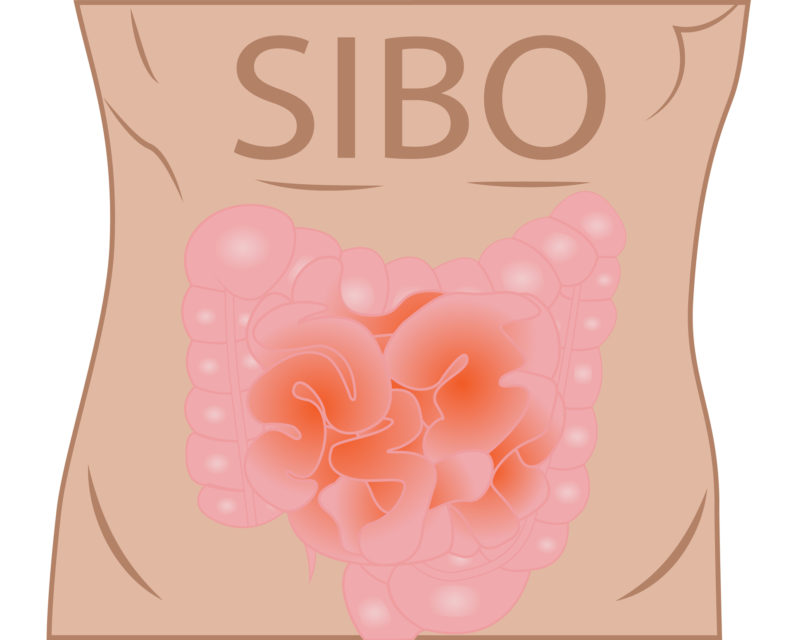In a recent review of over 1500 health assessments, we identified that 63% of people looking to improve their health had significant digestive issues. Gas and bloating, reflux, diarrhoea and constipation are the most common symptoms.
Many people report having these symptoms for months, years and even decades. They have got used to living with these symptoms, "it's just my sensitive stomach". Many had resorted to limiting the food that they eat, often cutting out healthy fibre rich foods rather than risk feeling lousy for days or even weeks.
We did a lot of microbiome testing on these people and the results were less than conclusive. Many people with significant digestive issues actually had fantastic microbiome health. That's when we started looking a bit further up the digestive tract in the small intestine.
The results we found were fascinating. Over 70% of people with digestive issues tested positive for SIBO using the FoodMarble home breath testing device. A treatable, reversible condition that not only allowed them to get back to eating healthily again but has probably checked their life health trajectory enormously.
So what is SIBO?
Small intestinal bacterial overgrowth ("SIBO") occurs when there is a significant overgrowth of bacteria in the small intestine. The number of bacteria in the small intestine is usually very low, unlike the large intestine.
Problems: When there is a significant increase of bacteria it upsets the way in which we normally break down and absorb food. This can lead to absorption problems, and discomfort and is strongly linked to rosacea. A review of 3,192 IBS subjects showed SIBO in 31% of cases.
Causes: SIBO occurs when food passage through the gut is slow or stagnant. This creates a breeding ground for bacteria. It can also occur if our normal defences to reduce bacteria in the gut are reduced by medication (antacids), surgery, and food poisoning.
Diagnosis is done by a lactulose breath test that can be performed at home.
Treatment is to kill off the excess bacteria with antibiotics or antimicrobials and to address to underlying cause to prevent recurrence.
Successful treatment should completely alleviate symptoms and in the subset of rosacea patients with SIBO (around 50%) this will also be eradicated.
Prevention of recurrence is important. Understanding the root cause and preventing relapse is critical.
Caused by stagnant food in the small intestine
There is a better way to treat SIBO
It is a hybrid end to end approach that uses the best in technology, the full range of treatment options, comprehensive nutritional support, group sessions, as well as 1:1 consultation.
You can learn more about the IBS SIBO solution here
Symptoms of SIBO
- Abdominal bloating after eating
- A feeling of fullness under the ribs after food
- Heartburn and reflux
- Belching or a high level of flatulence
- Abdominal discomfort
- Constipation OR diarrhoea / loose stools
- Muscle, joint pain, and headaches
- A red butterfly rash across the cheeks and nose - rosacea
- Brain fog, memory issues, and irritability
- Nausea and loss of appetite
Why does SIBO cause pain and inflammation?
The production of gas, especially methane, is highly irritating to the small intestine and causes pain, inflammation, and damage to the mucosa. This causes leaky gut, whereby bacteria and their metabolites leak into the bloodstream causing widespread inflammation that is seen in the skin. It also affects the normal absorption of nutrients.
Methane produces constipation and weight gain.
Not everybody has methane-producing bacteria, but those that do, and have SIBO, will often put on weight.
Obesogens
Methane producers are very effective fermenters and extract high amounts of energy from food and are sometimes called obesogens. Even when eating normal amounts of food this can cause significant weight gain.
Constipation
High methane can cause constipation. This has numerous knock-on effects. As well as causing discomfort it means that we are not getting rid of toxins in the body. When we treat SIBO patients who have constipation we often use magnesium citrate to improve the constipation before starting treatment. Killing off the excess bacteria can release toxins and if the toxins are not being removed because of constipation this can cause further inflammation and feeling unwell.
Intestinal methanogen overgrowth ("IMO"), cholesterol, and weight gain
Methane producers are not technically bacteria, but single-celled organisms with no nucleus, called archaeons.
Therefore when methane producers, like methanobrevibacter smithii, are the dominant microbe the condition is now called IMO.
A study in 2016 showed that these microbes cause significant nutrition issues. When the M. smithii was treated it led to lower total cholesterol, lower LDL cholesterol, better insulin levels, and lower glucose levels in patients with prediabetes.
Candida overgrowth ("SIFO")
As well as bacteria, fungi (especially candida) can also overgrow.
Candida love simple carbs and sugar and after eating can cause dramatic gas and flatulence.
When candida are being killed off they can produce a syndrome called "die off", when they release a toxin that makes you feel unwell (aka sugar craving). When you eat sugar the candida stop dying off and the craving goes. Getting past this stage is one of the reasons it can be difficult to wean off a high sugar diet, especially in cases with constipation.
The immune system is disrupted in rosacea with abnormal cytokines and anti-microbial peptides in the skin with an increase in inflammatory mediators in the skin.
In a study of 40 patients with SIBO treatment led to remission in all cases that persisted for three years.
Diagnosis
The gold standard is to aspirate the fluid in the small intestine and examine it. This method is mostly used in research and is highly invasive.
Fortunately, it is possible to perform an at-home breath test to see how quickly gas is produced after a period of fasting.
Read more about SIBO breath testTreatment
Reduce the food that makes the bacteria thrive
Normally a high fibre diet is what we need to support the microbiome in the large intestine. With SIBO, however, the bugs need to starve. We use a low FODMAP diet to reduce symptoms and to improve treatment.
Kill off the overgrowth
Clearing the bugs from the small intestine is enough in one third of cases to treat and get long-term remission of SIBO.
The killing stage. Treatment of the bugs is done over a 2-6 week period depending on whether pharmaceutical antibiotics and antifungals are used or if herbal antimicrobials are used.
We use a proprietary blend of herbs to treat both bacterial and fungal infections together that include high doses of berberine, oregano, neem and allicin, or will use a combination of rifamaxin and metronidazole. Both are equally effective. Antimicrobial treatment times are longer, but with fewer side effects (nausea being one).
References
The role of small intestinal bacterial overgrowth in rosacea: A 3-year follow-up J Am Acad Derm 2016
Small Intestinal Bacterial Overgrowth and Irritable Bowel Syndrome - An Update Front Psychiatry 2020






